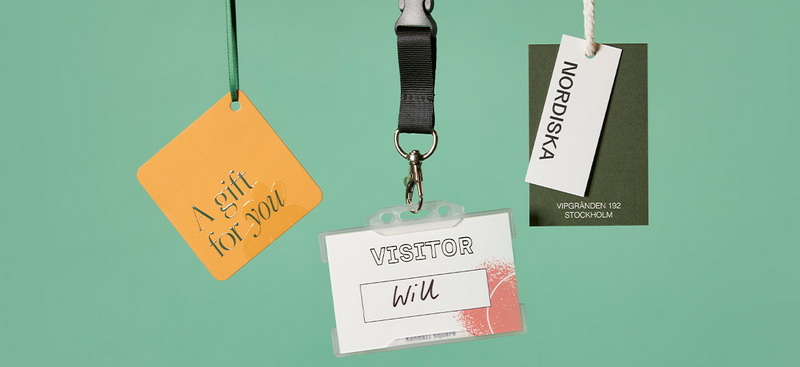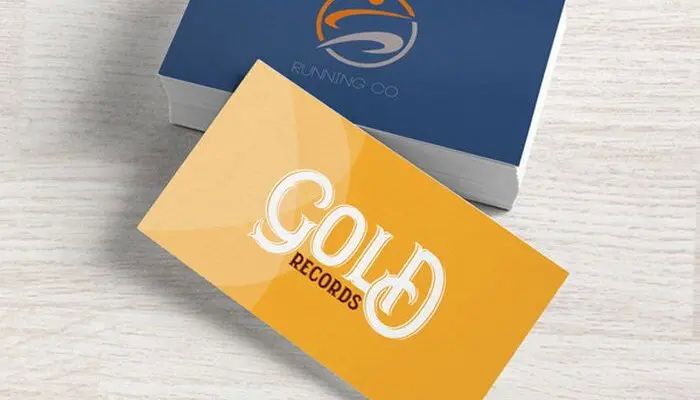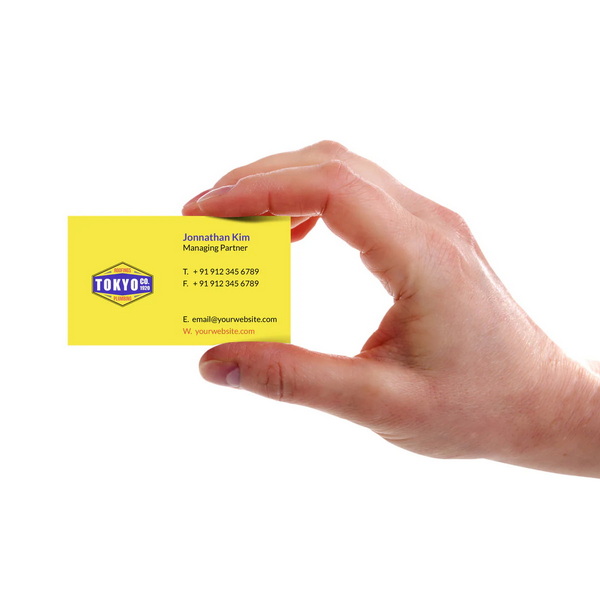Content Menu
● Understanding the Importance of Organizing Business Cards
● Physical Storage Solutions
>> Business Card Books
>> Rotary Card Files
>> Card Holders and Boxes
● Digital Storage Solutions
>> Business Card Scanner Apps
>> Cloud-Based Contact Management
>> Digital Business Cards
● Best Practices for Managing Business Cards
>> Regularly Update Your Contacts
>> Categorize Your Cards
>> Backup Your Digital Contacts
● Conclusion
● Frequently Asked Questions
>> 1. What is the best way to store physical business cards?
>> 2. Are there any recommended apps for scanning business cards?
>> 3. How often should I update my contact list?
>> 4. Can I share digital business cards without an app?
>> 5. What should I do with old or unused business cards?
● Citations:
In today's fast-paced business environment, networking is crucial, and business cards remain a fundamental tool for making connections. However, the challenge often lies in managing and storing these cards effectively. This article explores various methods to save business cards, both physically and digitally, ensuring that you can easily access your contacts whenever needed.

Understanding the Importance of Organizing Business Cards
Business cards serve as a tangible reminder of the connections you make. They carry essential information such as names, phone numbers, emails, and sometimes even personal notes. Proper organization of these cards not only helps in maintaining professional relationships but also enhances your networking efficiency. Without a structured approach to storing business cards, you risk losing valuable contacts and opportunities. Furthermore, a well-organized collection of business cards can serve as a valuable resource for referrals, collaborations, and staying updated on industry trends. Each card represents a potential lead, partnership, or source of information that could contribute to your professional growth. The act of organizing these cards is not merely a clerical task; it is an investment in your network and future success.
The context of where you receive a business card can also play a significant role in how you categorize and store it. For example, cards collected at a specific conference might be grouped together, allowing you to easily recall the discussions and connections made at that event. Similarly, cards from clients or potential customers might be prioritized differently than those from vendors or industry peers. Recognizing these nuances and tailoring your organizational system accordingly can greatly enhance the utility of your business card collection.
Physical Storage Solutions
For those who prefer keeping physical copies of business cards, several effective storage solutions exist:
Business Card Books
A business card book is a classic method for storing cards. These books typically come with plastic sleeves that allow you to insert cards securely while keeping them visible. This method is ideal for those who enjoy flipping through their contacts and appreciate the tactile experience of handling physical cards. They offer a neat and organized way to keep your cards protected from dust and damage. Business card books come in various sizes, allowing you to choose one that fits your storage needs. Some books also include alphabetical index tabs, which further enhance the ease of locating specific contacts. This system allows you to quickly browse and find the card you need without having to sift through a disorganized pile.
Choosing the right business card book involves considering the number of cards you need to store and the type of layout you prefer. Some books have horizontal pockets, while others have vertical ones. Additionally, the quality of the plastic sleeves can vary, so it's essential to select a book with durable, transparent sleeves that won't tear easily. Regular maintenance, such as occasionally wiping the sleeves clean, can help keep your cards looking their best.
Rotary Card Files
Another traditional method is using a rotary card file. This device allows you to organize cards alphabetically, making it easy to find specific contacts quickly. While it may take up some desk space, it provides an organized way to keep your business cards accessible. Rotary card files typically consist of a set of index cards held in a rotating base. Each card has slots or clips for holding business cards, and the rotating design allows you to quickly flip through your contacts. This method is particularly useful for those who frequently need to access their business card collection.
Rotary card files are available in various sizes and materials, ranging from simple plastic models to more sophisticated metal designs. Some files also include features such as adjustable dividers and locking mechanisms to keep your cards secure. When using a rotary card file, it's essential to regularly update the index cards to reflect any changes in contact information. This ensures that your file remains accurate and useful over time.
Card Holders and Boxes
Using a simple card holder or a decorative box can also be effective. You can categorize cards by industry or purpose within the box for easier retrieval. While this method might not be as organized as others, it allows for a more casual approach to storing business cards. Card holders and boxes can be a stylish addition to your desk or office space. They offer a simple and straightforward way to keep your business cards within reach. You can use dividers or labels to further organize the cards within the box, making it easier to find specific contacts.
When selecting a card holder or box, consider the material and design. Options range from sleek metal holders to rustic wooden boxes. Choose one that complements your personal style and office decor. It's also essential to ensure that the holder or box is large enough to accommodate your growing collection of business cards. Regularly reviewing and decluttering your card holder or box can prevent it from becoming overcrowded and disorganized.
Digital Storage Solutions
As technology advances, many professionals are shifting towards digital solutions for managing business cards. Here are some popular methods:
Business Card Scanner Apps
Apps like CamCard, Shoeboxed, and Wantedly People allow users to scan physical business cards and save them digitally on their smartphones or computers. These apps often come with features that enable easy editing of contact information and categorization based on tags or groups. By using optical character recognition (OCR) technology, these apps can accurately extract information from business cards and convert it into digital contacts. This eliminates the need for manual data entry and reduces the risk of errors.
- CamCard: This app lets you scan multiple cards at once and manage them effectively with tagging features. CamCard also offers cloud storage and synchronization, allowing you to access your contacts from any device. The app's advanced features include batch scanning, business card exchange, and CRM integration. With its user-friendly interface and robust functionality, CamCard is a popular choice for professionals who need to manage a large number of contacts.
- Shoeboxed: Known for its receipt scanning capabilities, it also offers business card scanning features. Shoeboxed is particularly useful for those who need to track expenses and manage receipts in addition to storing business cards. The app automatically extracts key information from receipts and business cards, making it easy to organize and categorize your data. Shoeboxed also offers a mail-in service where you can send your receipts and business cards, and they will be scanned and digitized for you.
- Wantedly People: Ideal for scanning multiple business cards in one go. Wantedly People uses a unique scanning technology that allows you to scan up to ten business cards simultaneously. The app also integrates with LinkedIn, making it easy to connect with your new contacts online. Wantedly People is particularly popular in Japan and other Asian countries, but it is also gaining traction in other parts of the world.
When choosing a business card scanner app, consider factors such as accuracy, speed, ease of use, and integration with other tools you use. It's also essential to check the app's privacy policy and security measures to ensure that your data is protected.
Cloud-Based Contact Management
Using cloud-based services like Google Contacts or Microsoft Outlook can help you store contact information securely online. These platforms allow for easy access from any device and facilitate sharing contact information with colleagues or clients seamlessly. Cloud-based contact management offers several advantages over traditional methods. Your contacts are automatically backed up and synchronized across all your devices, so you don't have to worry about losing data. You can also easily search and filter your contacts, making it easier to find the information you need.
Google Contacts and Microsoft Outlook offer a range of features for managing your contacts, including adding notes, creating groups, and setting reminders. They also integrate with other Google and Microsoft services, such as Gmail and Calendar, making it easy to schedule meetings and communicate with your contacts. When using cloud-based contact management, it's essential to choose a strong password and enable two-factor authentication to protect your data.
Digital Business Cards
The rise of digital business cards has transformed how professionals share their information. Platforms like Haystack provide users with customizable digital card templates that can be shared via QR codes or links without requiring the recipient to download an app. This approach not only reduces paper waste but also ensures that your contact information is always up-to-date. Digital business cards offer several advantages over traditional paper cards. They are environmentally friendly, cost-effective, and easy to update. You can also include multimedia content, such as videos and links, on your digital business card, making it more engaging and informative.
Haystack is a popular platform for creating and sharing digital business cards. It offers a range of customizable templates and features, including analytics, CRM integration, and team management. With Haystack, you can track how many people have viewed your card, where they are located, and what content they have engaged with. This data can help you optimize your networking efforts and improve your lead generation. Digital business cards are becoming increasingly popular as professionals look for more sustainable and efficient ways to connect.

Best Practices for Managing Business Cards
Regardless of the storage method chosen, adopting best practices can enhance your ability to manage business cards effectively:
Regularly Update Your Contacts
Make it a habit to review and update your contacts regularly. Remove duplicates, correct inaccuracies, and ensure that all information is current. Regularly updating your contacts is crucial for maintaining an accurate and useful database. People change jobs, move locations, and update their contact information frequently. By setting aside time to review and update your contacts, you can ensure that you have the most current information available.
Consider setting a reminder in your calendar to review your contacts on a monthly or quarterly basis. You can use a spreadsheet or CRM system to track updates and changes. When updating your contacts, be sure to verify the information with the individual directly or through online sources.
Categorize Your Cards
Organizing your cards into categories can simplify retrieval. Consider grouping them by industry, event type, or geographical location. Categorizing your cards makes it easier to find the contacts you need when you need them. You can create categories based on various criteria, such as industry, job title, company size, or relationship type.
For example, you might create categories for clients, prospects, vendors, partners, and industry peers. You can also create categories for specific events or conferences you attended. Using tags or labels can further refine your categories and make it easier to search for specific contacts.
Backup Your Digital Contacts
If you opt for digital storage, ensure that you regularly back up your data to avoid losing important contacts due to technical issues. Backing up your digital contacts is essential for protecting your data against loss or damage. Technical issues such as hard drive failures, software glitches, or malware attacks can result in the loss of valuable contact information.
By regularly backing up your data, you can ensure that you have a copy of your contacts that can be restored in case of an emergency. Consider using a cloud-based backup service or an external hard drive to store your backups. It's also a good idea to test your backups periodically to ensure that they are working properly.
Conclusion
Saving and organizing business cards effectively is essential for maintaining professional relationships in today's networking landscape. Whether you prefer physical storage methods like card books or boxes or opt for digital solutions through scanning apps and cloud services, the key is consistency in organization and regular updates of your contacts. By integrating traditional methods with modern digital tools, you can create a robust system that suits your individual needs. Remember that the goal is not just to collect business cards, but to cultivate meaningful connections and leverage them for your professional growth.

Frequently Asked Questions
1. What is the best way to store physical business cards?
The best way to store physical business cards includes using a business card book or rotary file for easy access and organization. These methods offer a structured approach to keeping your cards protected and easily accessible.
2. Are there any recommended apps for scanning business cards?
Yes, popular apps include CamCard, Shoeboxed, and Wantedly People which allow users to scan and manage their contacts digitally. These apps utilize OCR technology to accurately extract information from business cards.
3. How often should I update my contact list?
It is advisable to review and update your contact list at least once every few months to ensure accuracy. Regularly updating your contact list ensures that you have the most current information available.
4. Can I share digital business cards without an app?
Yes, platforms like Haystack allow you to share digital business cards via QR codes or links without requiring recipients to download an app. This makes it easier for people to connect with you without the need for additional software.
5. What should I do with old or unused business cards?
Consider recycling old or unused business cards if they are no longer relevant or if the contact information has changed significantly. Recycling helps to reduce paper waste and promotes environmental sustainability.
Citations:
1. https://www.shoeboxed.com/blog/5-effective-ways-to-store-your-business-cards/
2. https://maxobiz.com/innovative-solutions-on-how-to-organize-business-cards/
3. https://github.com/haoweiguang/haoweiguang.github.io/blob/master/index.html
4. https://www.copper.com/resources/how-to-organize-business-cards
5. https://www.camcard.com
6. https://www.cnblogs.com/techgy/p/16597125.html
7. https://zapier.com/blog/best-business-card-scanner-software/
8. https://thehaystackapp.com
































